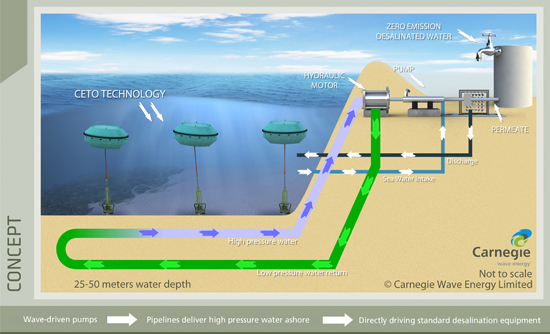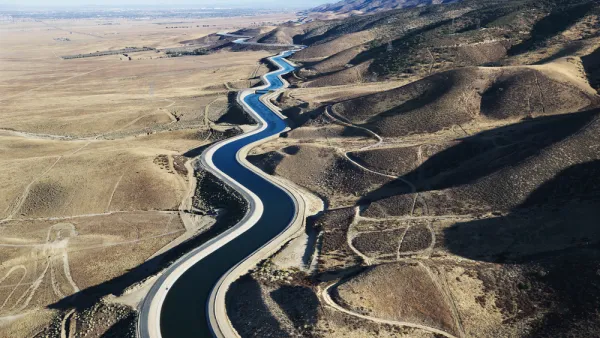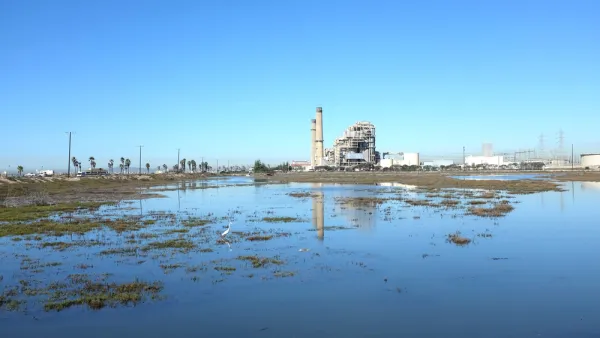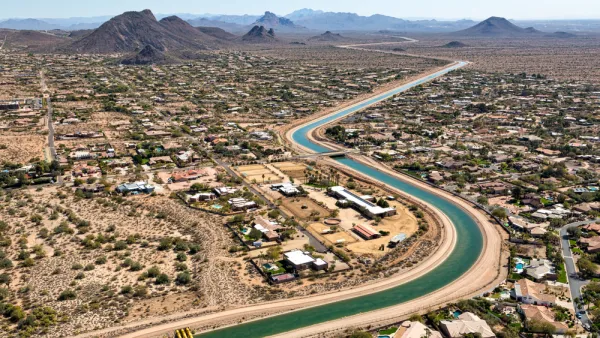The future has arrived in Western Australia thanks to new technology created and implemented by Carnegie Wave Energy. The CETO project marries renewable power with desalination—a timely marriage when droughts and climate change take center stage.
"In one of the country’s biggest infrastructure projects in its history, Australia’s five largest cities are spending $13.2 billion on desalination plants capable of sucking millions of gallons of seawater from the surrounding oceans every day, removing the salt and yielding potable water," writes Amy Yee of The New York Times.
One of the biggest challenges is to how to supply the energy while creating the lowest carbon footprint. That's where Carnegie Wave Energy's renewable power comes into play.

"Named after the Greek sea goddess, CETO technology produces zero-emission electricity by using submerged buoys tethered to seabed pumps, which drive hydroelectric turbines via high-pressure water through a subsea pipe," writes William Yeoman of The West Australian. They buoys create the energy by harnessing the waves, causing them to go up and down.
"In late February, the buoys started supplying 240 kilowatts each to the electricity grid at HMAS Stirling, Australia’s largest naval base," writes Yee. "They also help run a desalination plant that transforms seawater into about one-third of the base’s fresh water supply."
"The potential energy in the ocean's waves globally is twice what the world currently consumes, so there is enormous potential for wave energy," states Carnegie Wave Energy boss Michael Ottaviano. [The West Australian].
If you're unsure as to how the bobbing of the buoys creates energy, The Economist has an excellent diagram and description in their March article on the project.
Hat tip: Loren Spiekerman
FULL STORY: Catching Waves and Turning Them Into Electricity

Analysis: Cybertruck Fatality Rate Far Exceeds That of Ford Pinto
The Tesla Cybertruck was recalled seven times last year.

National Parks Layoffs Will Cause Communities to Lose Billions
Thousands of essential park workers were laid off this week, just before the busy spring break season.

Retro-silient?: America’s First “Eco-burb,” The Woodlands Turns 50
A master-planned community north of Houston offers lessons on green infrastructure and resilient design, but falls short of its founder’s lofty affordability and walkability goals.

Test News Post 1
This is a summary

Analysis: Cybertruck Fatality Rate Far Exceeds That of Ford Pinto
The Tesla Cybertruck was recalled seven times last year.

Test News Headline 46
Test for the image on the front page.
Urban Design for Planners 1: Software Tools
This six-course series explores essential urban design concepts using open source software and equips planners with the tools they need to participate fully in the urban design process.
Planning for Universal Design
Learn the tools for implementing Universal Design in planning regulations.
EMC Planning Group, Inc.
Planetizen
Planetizen
Mpact (formerly Rail~Volution)
Great Falls Development Authority, Inc.
HUDs Office of Policy Development and Research
NYU Wagner Graduate School of Public Service




























